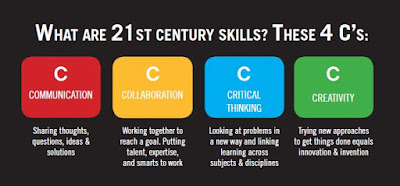Creativity is defined as the tendency to generate or recognize ideas, alternatives, or possibilities that may be useful in solving problems, communicating with others, and entertaining ourselves and others. (Robert E. Franken, 1994). To be creative, students must be able to view things differently or in new ways of thinking. They, can use wide range of idea creation techniques such as brainstorming and others to generate the new possibilities or new alternatives. Creativity is not measured by only the number of alternatives that they can generate, but the uniqueness of those alternatives. The term unique in the idea is defined that the idea is worthwhile, more fundamental qualities of thinking and solving problems. Elaborate, refine, analyse and evaluate original idea to improve and maximize creative efforts. Creativity can be worked with others. This can help to develop, implement, and communicate new ideas to work efficiently. It also helps students to be open and responsive to n...
